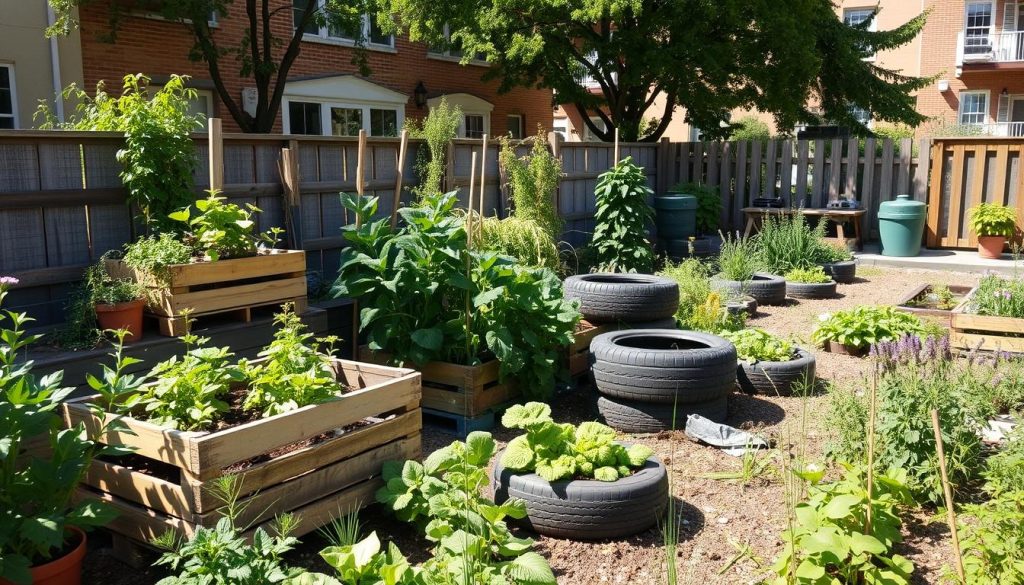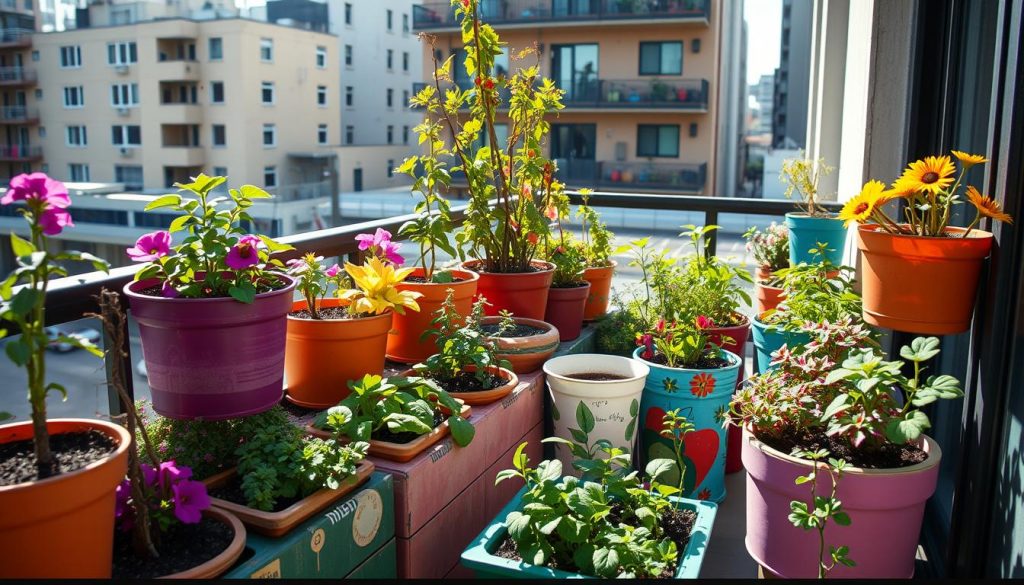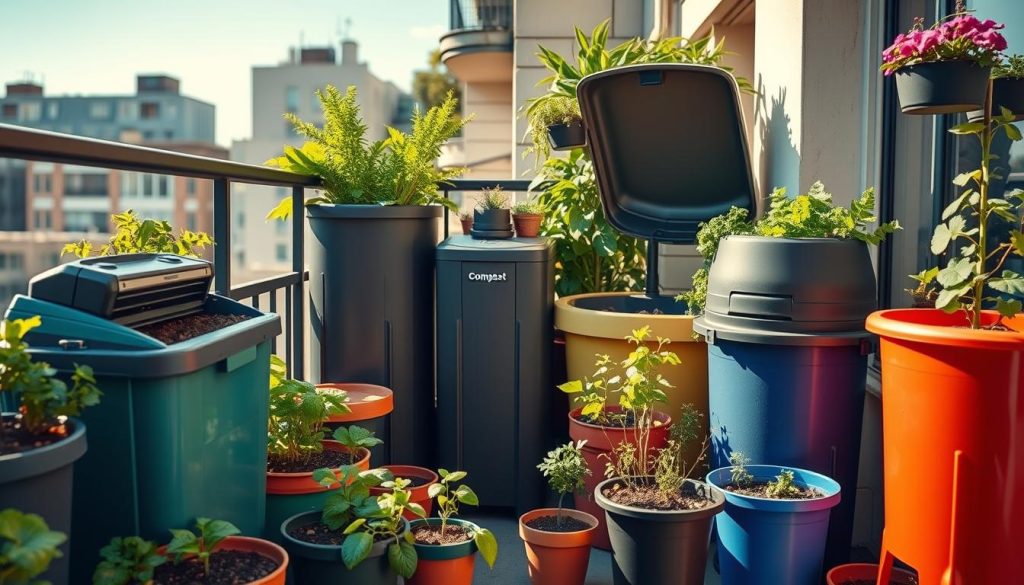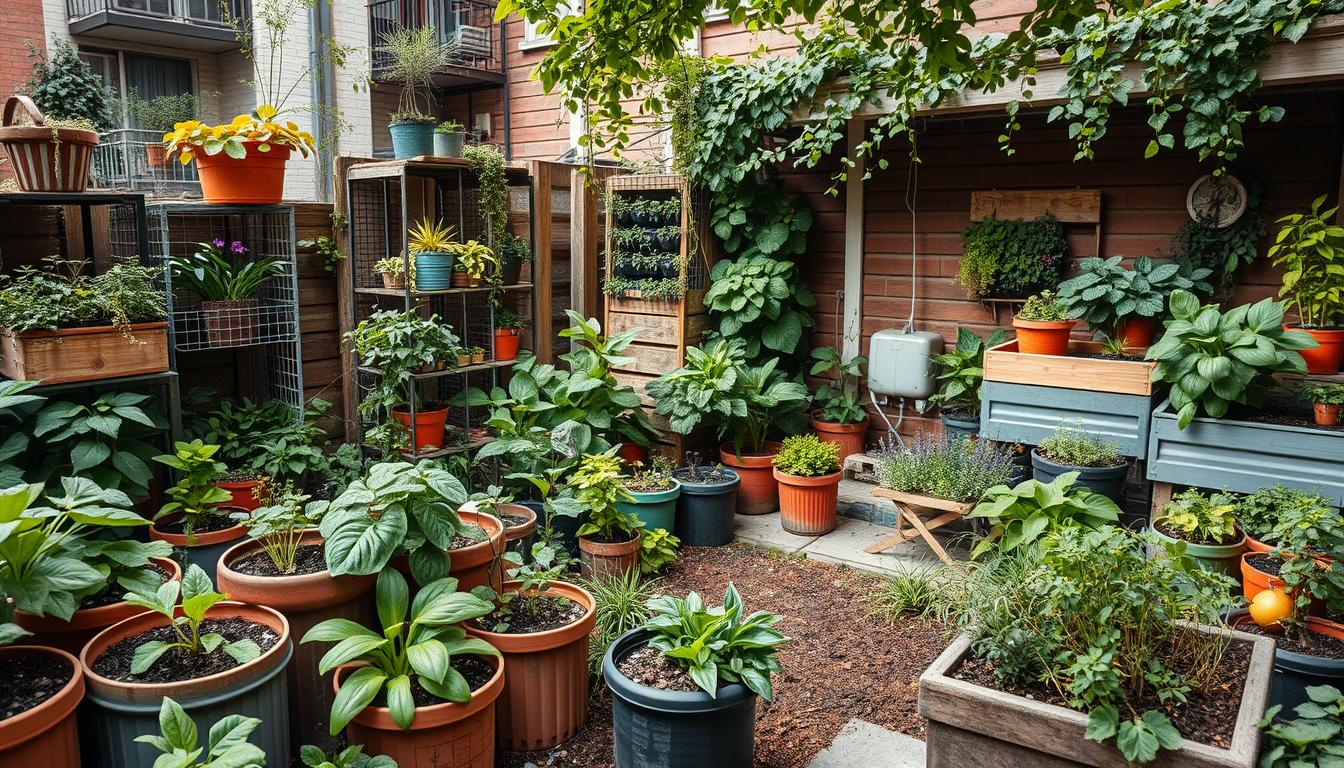As a renter, I’m eager to learn about zero-waste gardening. It lets me grow my own food and cut down on waste. The United States Environmental Protection Agency (EPA) says it’s a great way to reduce environmental impact.
I’m excited to share how I’ve made a sustainable garden in a small space. Using zero-waste gardening techniques, anyone can grow their own food. It’s all about reducing waste and living sustainably.
In this article, I aim to give you a detailed guide to zero-waste gardening for renters. You’ll learn about sustainable gardening, reducing waste, and growing food in small spaces. It’s all about following zero-waste and sustainable gardening tips.
Understanding Zero-Waste Gardening Principles
Exploring zero-waste gardening in my apartment is exciting. It means using natural materials, saving water, and cutting down on waste. This way, I can make my gardening more eco-friendly and support a sustainable food system.
The National Gardening Association says eco-friendly gardening can cut down environmental impact by up to 50%. This is possible with a few easy changes. For instance, I can use compost instead of chemical fertilizers, collect rainwater, and pick plants that need less water.

- Using natural and biodegradable materials for planters and mulch
- Reducing water consumption through efficient irrigation systems
- Minimizing waste by composting food scraps and using recycled materials
By sticking to these principles, I can have a green and productive garden in my apartment. As a renter, it’s key to use zero-waste gardening. With some creativity and planning, I can have a lovely, eco-friendly garden that gives me joy and fresh food.
Creative Container Gardening Solutions
As an urban gardener, I’m always on the lookout for ways to maximize my small space. Using creative container gardening solutions is a great way to do this. It’s especially helpful for beginners, making gardening fun and rewarding. Using recycled containers and compost helps reduce waste and makes gardening sustainable.
Choosing the right containers is key. The size and material depend on the plant and available space. Popular options include wooden planters, terra cotta pots, and plastic containers. You can also use recycled items like old buckets or colanders.

- Choose containers that are at least 5-7 gallons to provide enough room for the roots to grow
- Use a well-draining potting mix to prevent waterlogged soil
- Fertilize regularly to promote healthy plant growth
By following these tips and using creative solutions, you can create a beautiful garden in a small space. Whether you’re new to gardening or experienced, urban gardening is rewarding with the right techniques and practices.
Composting Without a Backyard
Exploring zero-waste gardening for renters, I found composting key. It cuts waste and enriches soil. The Composting Council says compost can slash waste by half. Now, I’m excited about composting without a backyard, ideal for renters.
Indoor Composting Options
Indoor composting has many choices, like vermicomposting and bins. These let renters garden without space issues.
Choosing the Best Compost Bin for Renters
When picking a compost bin, think about size, material, and air flow. Look for something small, odorless, and simple to care for. The Worm Factory and OXO Good Grips Compost Bin are good picks.

Tips for Maintaining Your Compost
To keep your compost right, mix “green” and “brown” stuff like food and leaves. Keep it damp but not soggy. Turn it often for air. These steps make great compost for your plants, all while being eco-friendly.
Planting Sustainable and Edible Gardens
My journey to a zero-waste garden has shown me the value of sustainable and edible gardens. Eco-friendly gardening helps reduce waste and gives me fresh produce. The National Gardening Association says using companion planting can boost crop yields by up to 20%.
I’ve started with herbs like basil, mint, and cilantro for small spaces. They’re easy to grow and add flavor to food. Choosing the right plants and preparing the soil with sustainable tips helps create a strong garden.
Herbs That Thrive in Small Spaces
- Basil: a low-maintenance herb perfect for small containers
- Mint: a hardy herb that can thrive in partial shade
- Cilantro: a fast-growing herb that adds a fresh flavor to dishes
Adding these herbs to my garden lets me enjoy different flavors and cut down on store-bought produce. Using seeds from kitchen scraps is also a green gardening trick that reduces waste and supports sustainability.
Companion Planting Basics
Companion planting helps plants grow well together and cuts down on pesticide use. Pairing plants like marigolds with tomatoes makes a balanced garden. This method is good for the environment and makes my garden look great.
Water Conservation Techniques for Renters
As an urban gardener, I’ve learned water conservation is key. With limited water, it’s vital to use less. Choosing drought-tolerant plants and using mulch helps a lot.
The EPA says rainwater harvesting can cut water use by 50%. This is great for renters who can’t control their water bills. Collecting rainwater helps us use less municipal water and garden more sustainably.
Collecting Rainwater in Urban Settings
To start, you need a rainwater barrel, a downspout diverter, and a first flush device. These tools help collect and filter rainwater for your garden. DIY solutions like ollas or clay pots also help water your plants efficiently.
Efficient Irrigation Methods for Containers
For container gardens, using water wisely is important. Drip irrigation and soaker hoses are great for this. They save water by delivering it right to the roots.
These water-saving tips help urban gardeners use less water. They’re perfect for beginners or those looking to improve their garden. Start with these ideas to make your garden more sustainable.
Staying Connected to the Community
My journey into zero-waste gardening has shown me how important it is to connect with my local community. Joining gardening groups and community gardens has not only broadened my knowledge. It has also given me a sense of belonging.
Joining Local Gardening Groups
Connecting with others who love urban gardening has changed my game. These groups share valuable tips and resources. They also support sustainable living.
Participating in Community Gardens
Getting involved in my local community garden has been a blessing. It lets me grow my garden and feel part of a community. Working with neighbors to create an eco-friendly garden is very rewarding.
Sharing and Exchanging Resources
Being part of this community means we share and exchange. We swap seeds, tools, and advice. This teamwork is key to living sustainably.
As I keep going on my zero-waste gardening path, I’m thankful for my connections and knowledge. Being active in my community makes my gardening better. It also helps make our future greener and more sustainable.

